|
   |
|
Page 4 |
Newsletter 130 Autumn 2020 © Hampshire Mills Group |
|
Essex and South Suffolk Field Visit, August 1985
Keith Andrews
|
From
the 1960s to the 1990s, the University of
Southampton Adult Education Department in
conjunction with Southampton University Industrial
Archaeology Group (SUIAG) as was, now Hampshire
Industrial Archaeology Society (HIAS) organised
week and weekend field visits to all parts of the
country. There were generally at most only one or
two mills and sometimes none featured in the
trips, but exceptionally the visit to Essex and
South Suffolk in August 1985 involved lots of mills,
because of the nature of the area.
So here are the mills that we visited on that trip.
The information about each mill is taken as is from
the notes for the visit prepared by the leader Dr
Edwin Course. Remember that they relate to the
situation in 1985! The pictures are mostly from the
slides I took at the time; the picture quality is
not especially good, a combination of the age of the
slides and the limitations of the converter. The
cost of slide film limited the number of pictures I
took, so in some cases there is no picture, or one
from a later visit.
|
 |
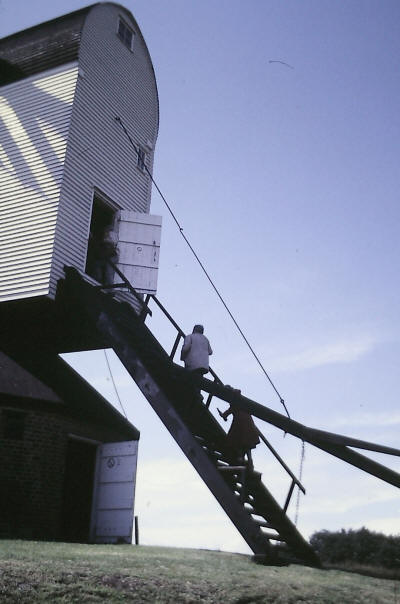 |
|
Mountnessing Windmill, near Brentwood
(TQ 632979)
This
post mill, owned by Essex County Council, has
recently been restored. It stands on the site of a
previous mill, which was demolished in the late 18th
century, and bears the date 1807. Its unusual
sixteen-sided roundhouse had a thatched roof until
the end of the First World War. The mill, which
worked until the 1930s, has a cast iron windshaft,
and retains much of its original machinery.
Flatford Mill (TM 077344)
Flatford Mill, with the nearby
Willy Lotts Cottage, is best known through the
paintings of John Constable. The mill is now being
used by the Field Studies Council, for courses. The
mill pond survives. No picture available.
|
|
Bourne Mill, Colchester (TM 006238)
Although it is no longer
working, this 16th century structure is of
considerable interest. The building, originally
erected as a fishing lodge, bears a date of 1591,
and was constructed of flint, bricks, stones, and
tiles from the ruins of St John's Abbey. With its
ornately finished gables and chimneys with octagonal
shafts, the architecture reflects that of the Low
Countries, and it is possible that Sir Thomas Lucas
may have employed Dutch Protestant refugees in its
construction. For a time it was a cloth mill, but
in the first half of the 19th century, following the
decline of the wool trade in Colchester, it was
converted to flour production. The mill ceased to
operate around the turn of the century. Although
not all of the machinery survives, the 26 foot
diameter cast iron overshot wheel, located
internally, now turns again. Pit wheel, wallower,
mainshaft, and great spur wheel also remain.
|
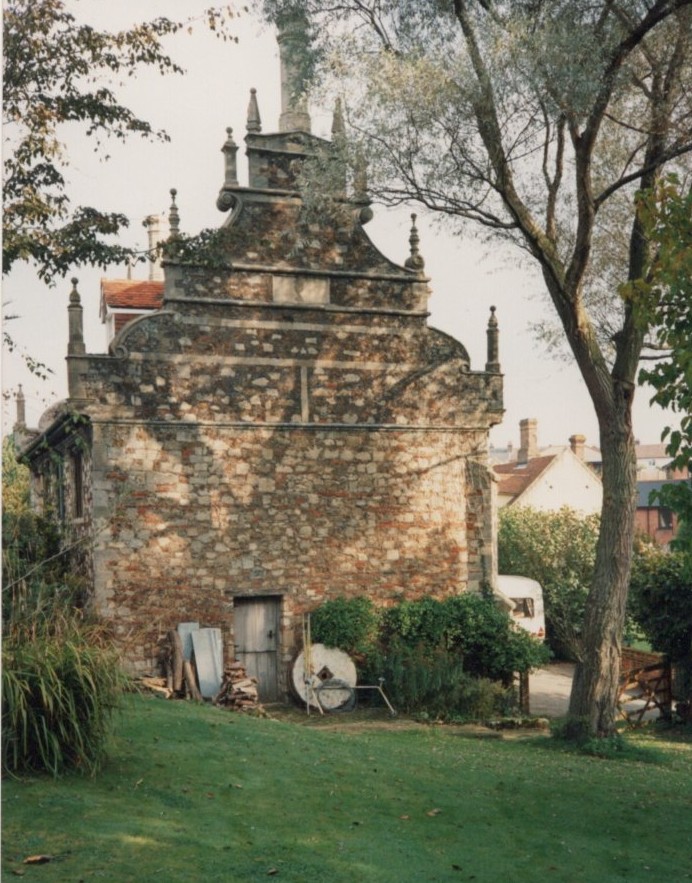 |
|
Framsden Windmill, near Debenham (TM
192597) |
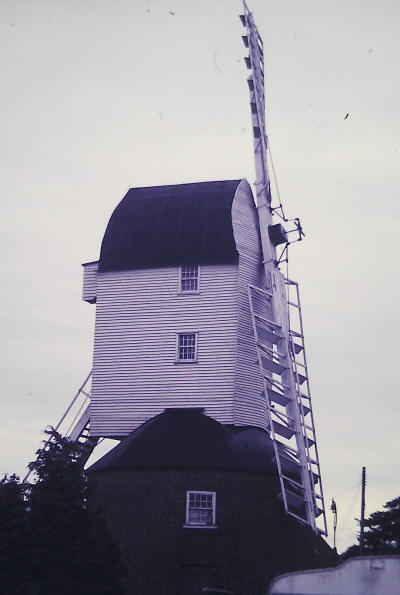 |
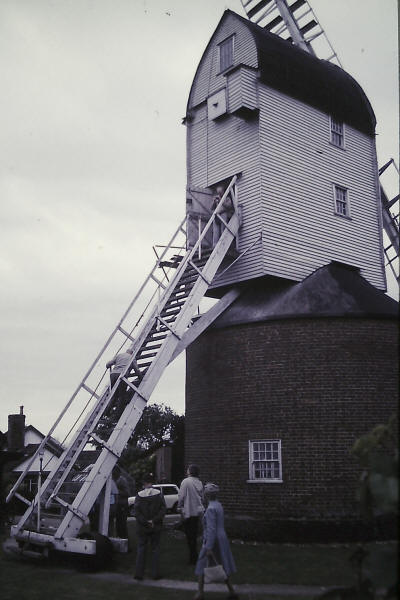 |
|
This post mill, which stands 48
feet high, dates from 1760, with additions,
including the two storey roundhouse, in 1836. It
has been restored in recent years, having become
derelict following disuse since 1934. Flour is now
ground occasionally.
|
|
Pakenham Watermill
(TL 937695)
The mill, of 18th century date,
though on a Domesday site, last worked commercially
in 1974. It has been restored by members of Suffolk
Preserv-ation Society, and corn is now being ground.
The exterior of the building is unusual, originally
weather-boarded, but in 1810 given a brick frontage
in the Georgian style. |
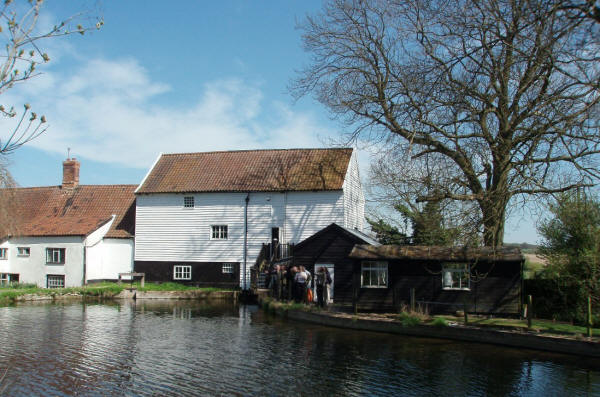
|
|
Woodbridge Tide Mill
(TM 275487)
Although there has been a mill
on the site since the 12th century, the present
building dates from 1793. A weather-boarded
structure, the mill was restored a decade ago, and
is now in working order. Unfortunately, during the
mill's period of disuse, the mill pond was sold for
a marina, but in 1978 work commenced on the creation
of a small pond which allows the mill to be worked
for demonstration purposes.
|
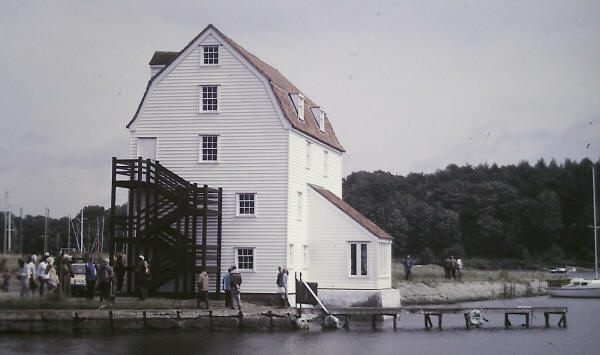 |
|
Marriages Mill, Chelmsford (TL
711075)
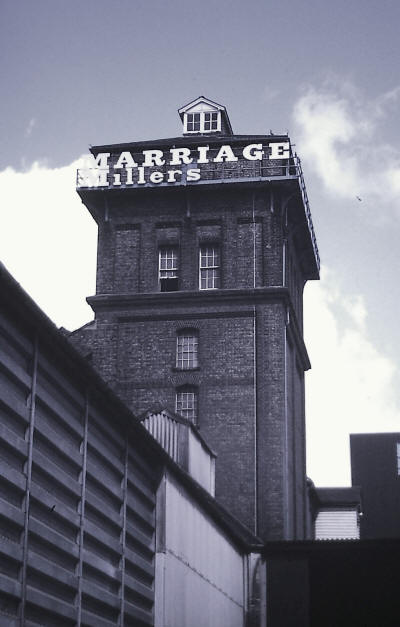 |
This large roller flour mill
dates from the turn of the century. It was formerly
powered by a 120hp steam engine, but this was
removed in 1952. Powered since then by electricity,
the mill produces both white and stoneground flour.
Marriages have been producing flour in Essex since
the 1820s, owning at various times mills powered by
water, wind, steam, and electricity.
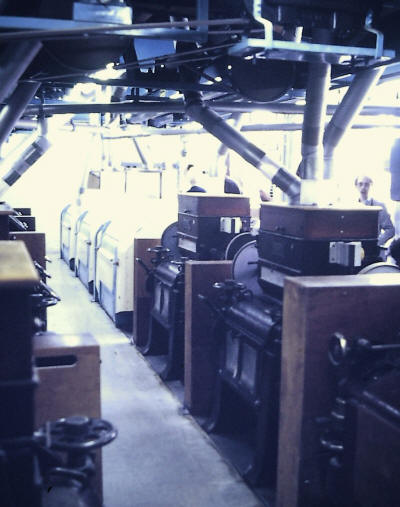 |
|
Vanners Silk Mill, Sudbury
As
with many East Anglian silk weavers, Messrs Vanners
trace their origins to the French Protestant
refugees who settled in the Spitalfields district of
East London. They were established in the 18th
century there, but later moved out to the Essex and
Suffolk borders. Initially, they used handloom
weavers working in their own homes, but later
concentrated production in factories. Their present
premises in Sudbury are in a range of buildings
built at various times between the 1930s and the
present day. All the stages of production, from the
receipt of raw silk from China and Brazil, to the
weaving of silk for ties, will be seen at Vanners.
Although on a larger scale, the processes may be
similar to those followed by Ede and Ravenscroft at
Whitchurch. No picture available.
|
|
Ramsay Windmill, near Harwich
(TM 208305)
This post mill, which dates from
1842, was built with all the automatic devices of
the new cast iron technology of the late 18th and
early 19th centuries, and represents the ultimate
development of the post mill. It is 49 feet high,
with a three storey brick roundhouse, which was used
for storage. The mill was used until the outbreak
of the Second World War. It remained, abandoned,
until 1964 when it was purchased by its present
owner. During the 1970s, restoration tock place
over 60 volunteers giving about 6000 hours to the
project.
|
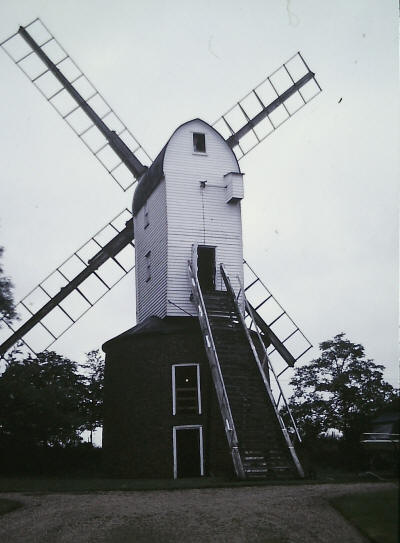
|
|
Thorrington Tide Mill, near
Brightlingsea (TM 083194)
This early 19th century three
storey weather-boarded mill still contains all its
machinery. The exterior iron waterwheel also
survives, though in poor condition.
|
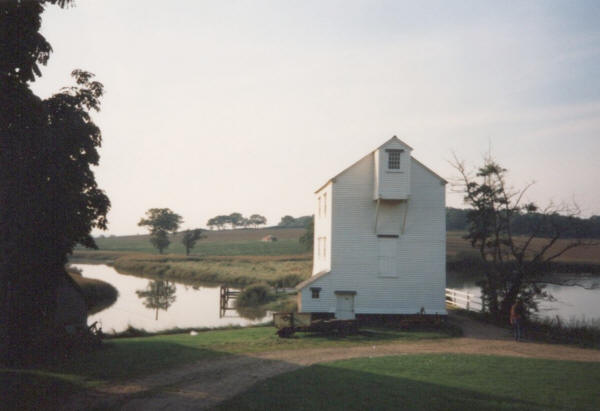
Pictured in October 1994. Looking at the wheel,
there looks to have been some restoration since
1985. |
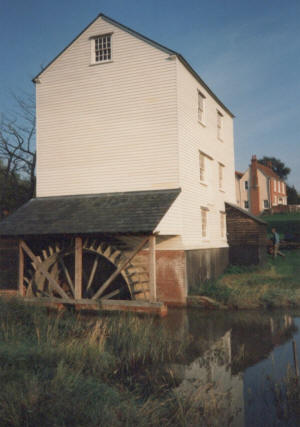 |
|
   |
|
|
